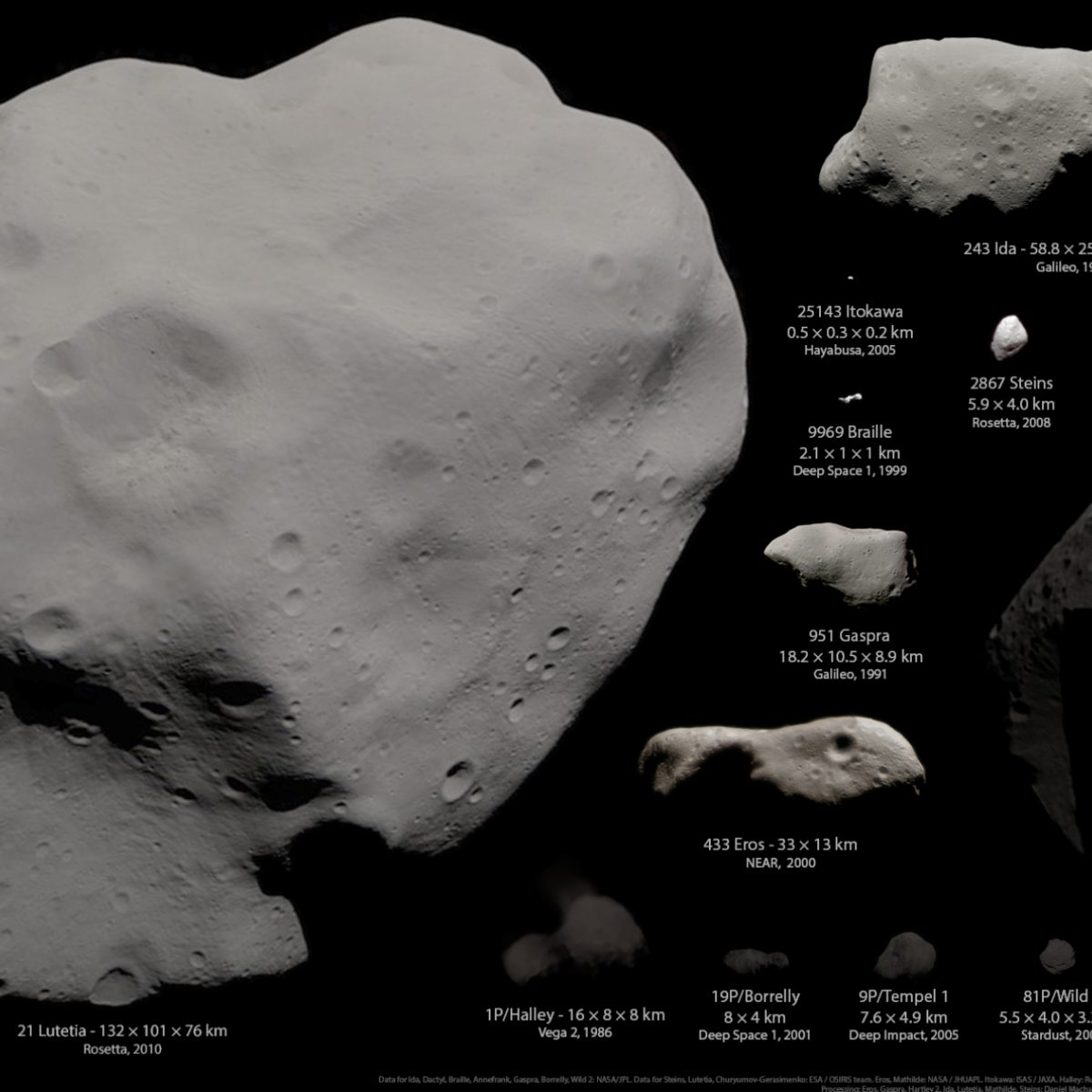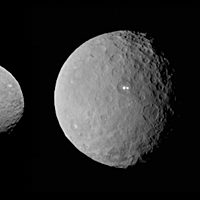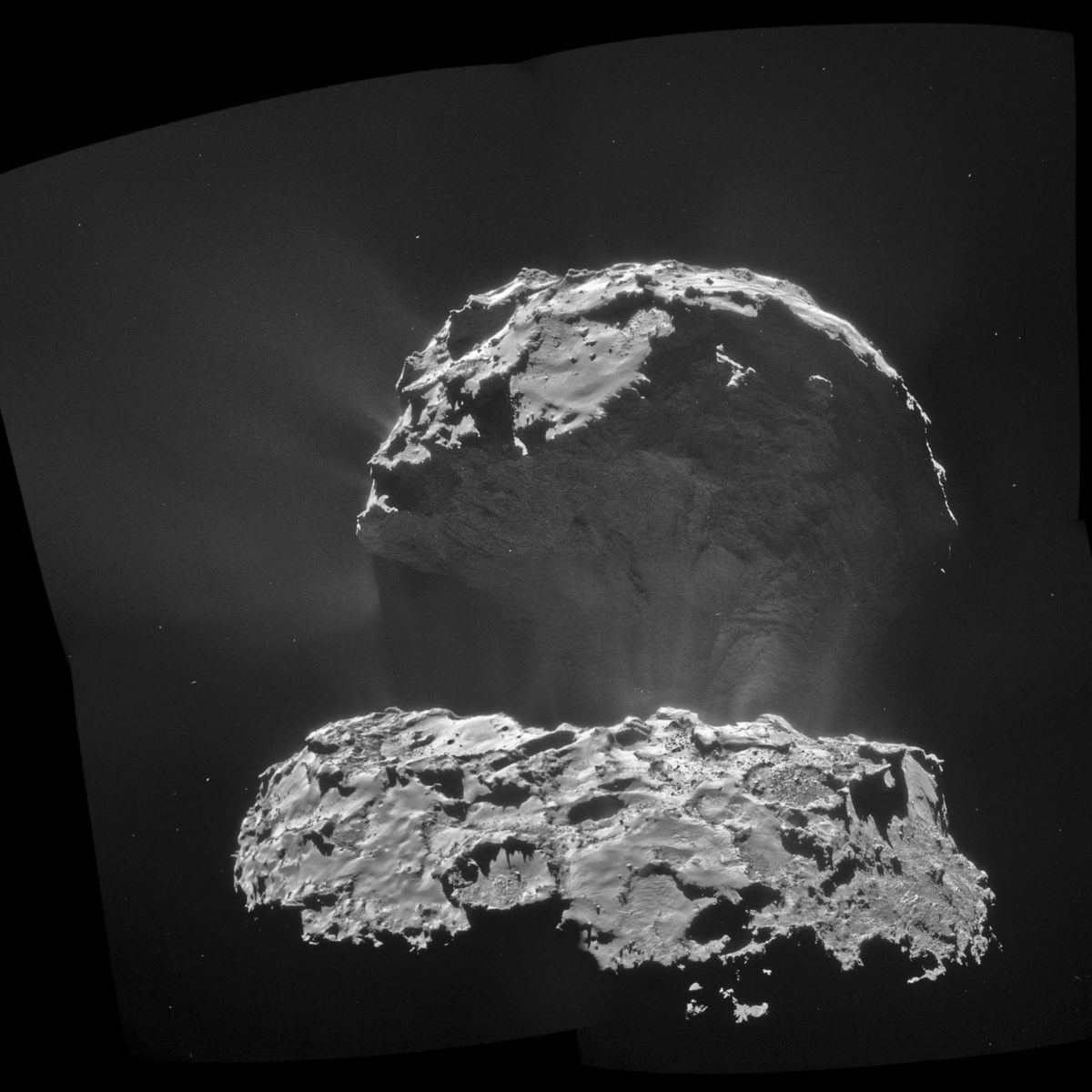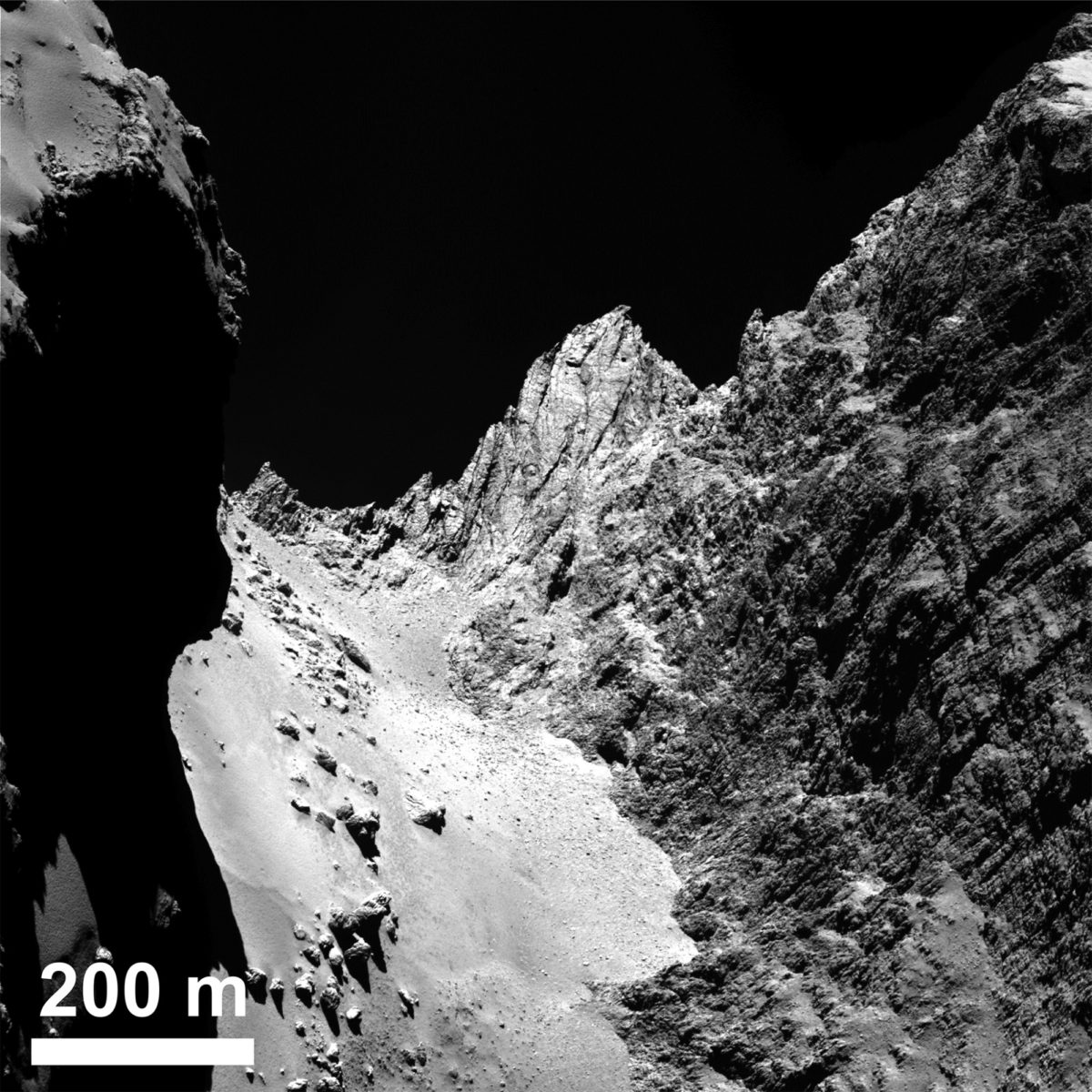All
All
Stories, updates, insights, and original analysis from The Planetary Society.
Adding Churyumov-Gerasimenko to my scale comparison of comets and asteroids
Having found a color photo of the comet, I finally added Churyumov-Gerasimenko to my scale comparison of comets and asteroids visited by spacecraft.
Mini mission updates: Dawn in orbit; Curiosity short circuit; Rosetta image release; Hayabusa2 in cruise phase; and more
Dawn has successfully entered orbit at Ceres, becoming the first mission to orbit a dwarf planet and the first to orbit two different bodies beyond Earth. I also have updates on Curiosity, Rosetta, Mars Express, Hayabusa2, the Chang'e program, InSIGHT, and OSIRIS-REx.
An active comet, from a distance
Rosetta has closed to within 50 kilometers of Churyumov-Gerasimenko, on its way to a very close, 6-kilometer flyby of the comet tomorrow. To prepare for the flyby, Rosetta traveled much farther away, allowing it to snap these amazing photos of an increasingly active comet from a great distance.
Rosetta shifts from sedate circular orbits to swooping flybys
For the period of time before and after the Philae landing, Rosetta was able to orbit the comet close enough that it was in gravitationally bound orbits, circling the comet's center of gravity. As the comet's activity increases, the spacecraft has to spend most of its time farther away, performing occasional close flybys. The first of these is at 6 kilometers, on February 14.
At last! A slew of OSIRIS images shows fascinating landscapes on Rosetta's comet
The first results of the Rosetta mission are out in Science magazine. The publication of these papers means that the OSIRIS camera team has finally released a large quantity of closeup images of comet Churyumov-Gerasimenko, taken in August and September of last year. I explain most of them, with help from my notes from December's American Geophysical Union meeting.
New Churyumov-Gerasimenko Shapemodel!
Mattias Malmer shares his latest shape model of Comet 67P/Churyumov–Gerasimenko, created using data from the Rosetta spacecraft.
Rosetta imaged Philae during its descent -- and after its bounce
This morning ESA released a set of images of the Philae lander taken by the Rosetta orbiter during -- and after -- the lander's first touchdown. The images contain evidence for the spot Philae first touched the comet, and a crucial photo of Philae's position several minutes into its first long bounce.
Now Philae down to sleep
My last post on the drama in Darmstadt, where ground controllers believe Philae may have fell asleep for good.
Philae update: My last day in Darmstadt, possibly Philae's last day of operations
Emily Lakdawalla gives a status report on Philae from the European Space Operations Centre (ESOC) in Darmstadt.
Brief Philae "Morning After" update: First ÇIVA panorama from the surface
I'm just getting up to speed on the news from overnight, which is mostly good: Philae remained in contact with the orbiter (which means the CONSERT radar sounding experiment was working), and it's sitting stably on the surface, although it's not anchored in any way. And they released the first ÇIVA image from the ground!
Philae status, a day later
The Philae team scrambled all morning to comprehend the initially confusing status of the lander, and the picture is much clearer today. Speaking of which, there are lots more pictures!
PHILAE HAS LANDED! [UPDATED]
The landing happened on time just after 16:02 UT today! Philae mission manager Stephan Ulamec said:
Philae update: Photo documentation of Philae's separation!
Here it is. We knew hours ago that Philae separation happened, but there's nothing like seeing a photo, seeing Philae's mothership receding into the distance.
Report from Darmstadt: Philae status and early Rosetta results from DPS
I'm reporting live from the press room at the European Space Operations Centre in Darmstadt, Germany. There's little news on Philae yet except that its status is good. Meanwhile, Rosetta scientists presented their first early comet results at the Division for Planetary Sciences meeting in Tucson, Arizona, which I watched from afar using Twitter.
Philae update: First of four "go-no-go" decisions is a GO!
It's been a day of calm before the storm here at the European Space Operations Centre in Darmstadt, as we get ready for the big event tomorrow: Philae's hoped-for landing on a comet. The first of four
Philae landing preview: What to expect on landing day
Earth's first-ever landing on a comet is a week away. On November 12 at 8:35 UT, Philae will separate from Rosetta. Seven hours later, it will arrive at the surface of the comet. Hopefully, Philae will survive the landing, and begin to return data.
A (Difficult) Day in the Solar System
After a bad day on the launch pad, some perspective.
Rosetta NAVCAM's Shades of Grey
What do “light” and “dark” mean for an object like Comet 67P/C-G? Here are some details on how Rosetta's NAVCAM images are taken and displayed to make a wide range of surface features possible.
A feast of comet features from Rosetta at Churyumov-Gerasimenko
I have been horribly behind in posting images from Rosetta's exploration of comet 67P/Churyumov-Gerasimenko, and that's a shame, because the spacecraft has lately been exploring the comet from a range of only 10 kilometers. From that range, the NavCam gets sub-meter resolution, and we're seeing a menagerie of odd surface features


 Explore Worlds
Explore Worlds Find Life
Find Life Defend Earth
Defend Earth


 Sun
Sun Mercury
Mercury Venus
Venus Earth
Earth Mars
Mars Jupiter
Jupiter Saturn
Saturn Uranus
Uranus Neptune
Neptune Small Bodies
Small Bodies

















